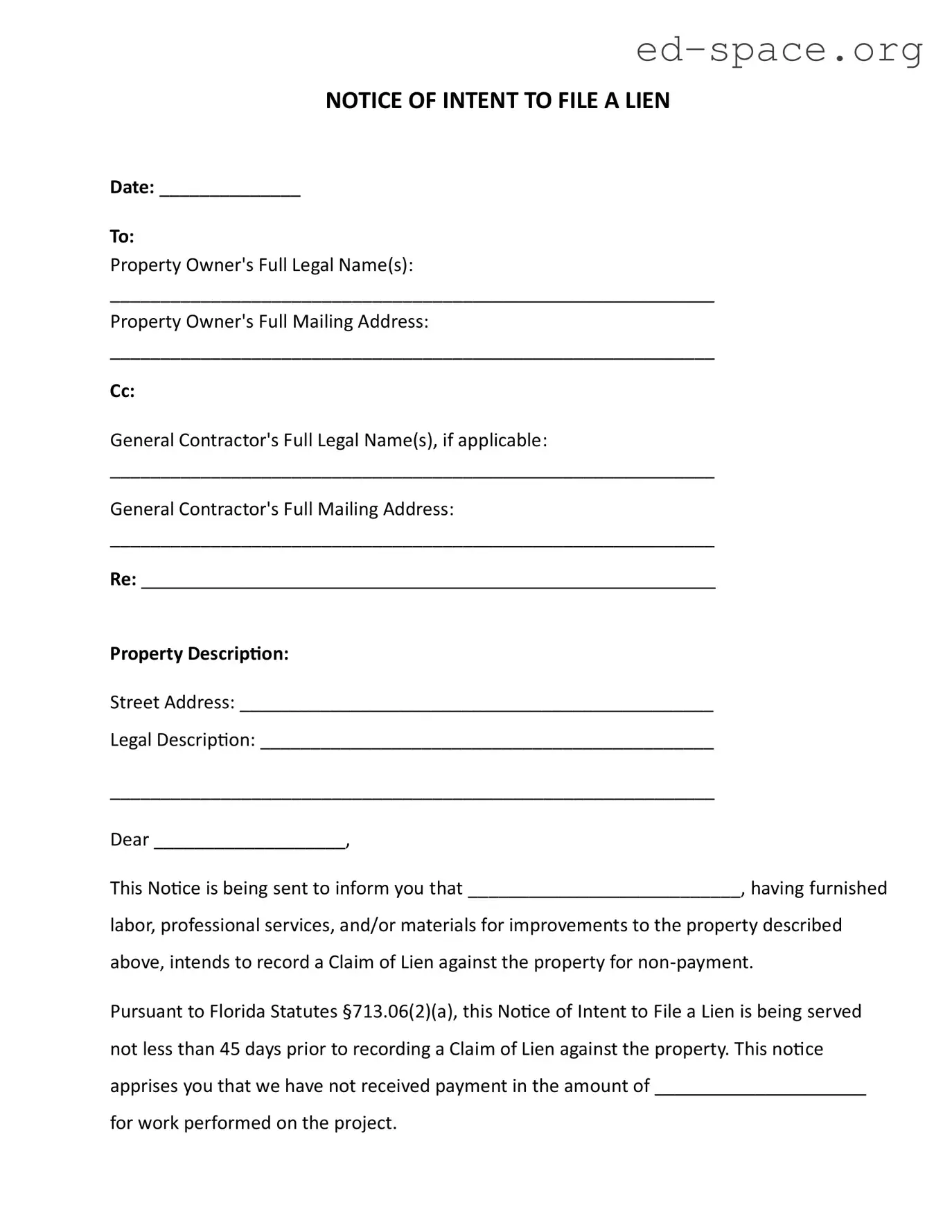What is a Notice of Intent to File a Lien in Florida?
A Notice of Intent to File a Lien is a formal document sent by an individual or entity that has provided labor, services, or materials for property improvements but has not received payment. In Florida, this notice serves as a warning to the property owner that the sender intends to place a lien on the property if payment is not received. This step is a prerequisite under Florida Statutes §713.06(2)(a), meant to give the property owner a chance to settle the debt before a lien is officially recorded against the property.
When should a Notice of Intent to File a Lien be sent?
In accordance with Florida law, the Notice of Intent to File a Lien must be served to the property owner at least 45 days before actually filing a lien. This period allows the property owner an opportunity to pay the outstanding amount or reach an agreement with the sender to prevent a lien from being placed on the property.
Who should receive the Notice of Intent to File a Lien?
The primary recipient of the Notice of Intent to File a Lien should be the property owner or owners. If there is a general contractor involved in the project, a courtesy copy (cc) should also be sent to them. This ensures that all parties involved in the property improvements and the resulting financial transaction are aware of the pending lien.
How is the Notice of Intent to File a Lien sent?
The Notice of Intent to File a Lien can be delivered via several methods, including certified mail with return receipt requested, registered mail, hand delivery, by a process server, or publication. These methods ensure there is a record of delivery, which is crucial for meeting legal requirements and proving that the property owner was duly notified.
What happens if the property owner does not respond to the Notice of Intent to File a Lien?
If the property owner does not make the necessary payment or otherwise respond satisfactorily within 30 days following receipt of the Notice of Intent to File a Lien, the sender may proceed to file an official lien against the property. This action can lead to foreclosure proceedings, with the property owner potentially being responsible for additional costs, such as attorney fees and court expenses.
Can the filing of a lien be avoided?
Yes, the filing of a lien can be avoided if the property owner pays the outstanding amount in full or negotiates a satisfactory arrangement with the sender within the given timeframe. The sender of the Notice of Intent to File a Lien typically prefers to resolve the matter without escalating it to a lien filing, as indicated in the notice.
What should a property owner do upon receiving a Notice of Intent to File a Lien?
Upon receiving a Notice of Intent to File a Lien, a property owner should first verify the claim's validity, including the amount due and the services or materials provided. Then, the owner should promptly contact the sender to settle the debt or discuss possible payment arrangements. Ignoring the notice or failing to act could result in a lien against the property and subsequent legal action.
Is the Notice of Intent to File a Lien the same as filing a lien?
No, the Notice of Intent to File a Lien is not the same as filing a lien. It is a preliminary step required by Florida law that serves as a warning to property owners, giving them a chance to pay the outstanding debt before an actual lien is filed against their property. Only if the situation is not resolved after the notice is sent does the sender proceed with filing a lien.

